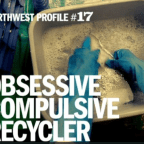
Tons of Japan’s Tsunami Debris Due on West Coast
The best analogy for the impacts of tsunami debris, explains Ebbesmeyer, is the 150-ton concrete-and-metal dock that washed up on the Oregon coast. More than 50 feet in length and about ten feet “tall,” less than a foot of it was visible in the water. Like the debris field, it was almost impossible to spot in open water, a hazard to marine navigation, and a Trojan horse of sorts: the dock was carrying more than 90 different, potentially invasive, species that were destroyed. Continue reading Tons of Japan’s Tsunami Debris Due on West Coast


